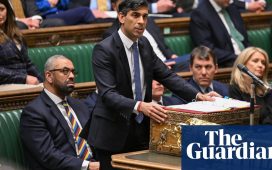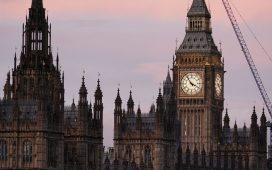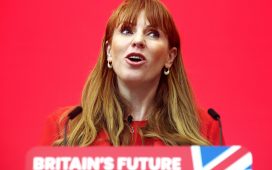 Image copyright
Image copyright
JESSICA TAYLOR/UK PARLIAMENT
MPs have been able to speak via video link during the coronavirus outbreak
The Commons Speaker has urged MPs to agree on a plan to allow all members, including those with health conditions, to continue to take part in Parliament.
Sir Lindsay Hoyle warned of the risk of “deadlock” over government plans to end the existing virtual proceedings, a move opposed by a large number of MPs.
MPs will decide what to do on Tuesday, using a temporary voting process.
They will be asked to queue up outside the Commons chamber before entering in order to observe social distancing.
The government says proceedings in force since the middle of April, in which most MPs have spoken remotely and votes have been held electronically, have been ineffective and a return to physical working is needed.
But a rival plan tabled by the cross-party Procedure Committee, in which the Speaker would be authorised to carry on with electronic voting and allow vulnerable MPs and those with caring responsibilities to participate “digitally”, has the support of the opposition as well as some Conservative MPs.
In a letter to MPs, Sir Lindsay said the Commons must decide how to conduct its business and its votes but this could only be done in person, because the previous “hybrid” arrangements have formally lapsed.
However, the usual practice of voting in corridors either side of the main chamber – the division lobbies – has been ruled unsafe by Public Health England, leaving the Commons in potential limbo ahead of its return from the Whitsun recess on Tuesday.
‘Not perfect’
Sir Lindsay is therefore proposing an unprecedented process for Tuesday’s decision, in which MPs will have to queue at a two metre distance from each before slowly filing into the chamber to cast their vote.
He said each vote – which will see MPs start their journey in Westminster Hall, the oldest part of the Palace of Westminster – would take about half an hour.
“I have had to devise a temporary way forward to break the deadlock – because the House must be able to have its say,” he said.
“It is not perfect, it will take time, and Members will need to be patient,” he said. “But, it is the safest method I can think of to enable members and supporting staff to maintain social distancing.
“However, I still remain hopeful that colleagues will agree on a method of participation that enables all members to take part, especially those who are shielding, vulnerable or have caring responsibilities.”
The current set-up has seen a maximum of 50 MPs allowed in the Commons chamber, with up to 120 taking part via video conferencing technology.
‘Much more effective’
But writing for the Politics Home website, Commons leader Jacob Rees-Mogg said the virtual set-up “is no longer necessary,” and physical working would make the Commons “much more effective”.
“Politics is better done face-to-face, even if the whites of the ministerial eyes are six feet away,” he added.
He also said work was underway with Commons authorities to determine how MPs shielding at home or with health conditions “can safely continue to contribute”.
It is understood the government sees the pairing convention – under which absent MPs from opposing parties have their votes cancelled out – as a way to account for MPs who are not able to vote in person.
In a report published on Saturday, the Procedure Committee said alternative plans to allow MPs to vote in person could see them cast their votes by walking either side of the Speaker’s chair in the Commons chamber.
Parliamentary officials – known as clerks – would record their names via cameras trained on the chamber floor.
But the committee dismissed the idea as having “significant practical deficiencies,” with a socially-distanced queue snaking 800m outside the chamber if all MPs took part.
It estimated that voting in such a way would take half an hour rather than the usual 15 minutes.
Instead the committee suggested a hybrid system, with some MPs voting in person and others via computer.
Shadow Commons leader Valerie Vaz said all MPs should be able to “participate on an equal basis,” and confirmed that Labour would vote in favour of remote voting continuing.
She said government plans to scrap digital votes would “result in two classes of MPs,” with some forced to stay away for health reasons.
Getting rid of semi-virtual working, she added, was “discriminatory and would not be acceptable in any other workplace”.
‘Toothless Parliament’
Among those criticising plans to scrap digital voting was Labour’s Dame Margaret Hodge, who said it had been working “perfectly well”.
The 75-year-old MP for Barking in east London, who is in the “vulnerable” category to the virus, said she was “being denied the right to vote”.
“This damaging move will limit accountability and create a toothless Parliament,” she added.
Liberal Democrat Jamie Stone, who cares for his wife, said the plan tabled by Mr Rees-Mogg would endanger the safety of his loved ones.
“You’re asking me to choose between the health of my family and abiding by your poxy stubbornness,” he tweeted.
“I choose to fulfil my duties as a husband and family man.”
The Prospect union, which represents some parliamentary staff, also criticised the decision to end virtual working, calling it “premature and unnecessary”.
Its deputy general secretary Garry Graham said MPs deserved to see “evidence in writing” from Public Health England that the plans to making them return to Westminster are safe.













